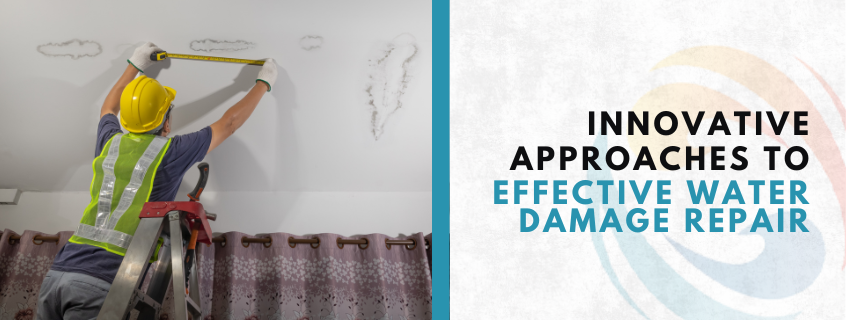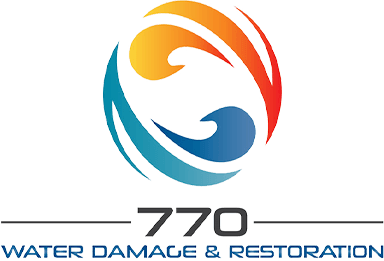Water damage can feel overwhelming for any homeowner. A burst pipe, a leaky roof, or a flooded basement can quickly turn your life upside down. With effective water damage repair, you can restore your home and peace of mind. In this article, we will explore innovative approaches to addressing water damage while providing practical solutions to help you navigate this challenging experience. The water damage restoration process involves a series of steps to mitigate and repair the effects of water damage in a property.

Effective water damage repair requires a systematic approach to assess the extent of the damage before any restoration work begins.
Homeowners should seek professional services, as experienced technicians can identify hidden issues that may not be immediately visible.
The first step in the process is to remove standing water using pumps and vacuums to prevent further structural damage.
Quickly drying out affected materials is essential, which can be achieved with dehumidifiers and fans.
Additionally, mold prevention is a crucial component, necessitating thorough cleaning and the application of antimicrobial treatments.
Documenting the damage for insurance claims is also important, ensuring that homeowners receive the necessary compensation.
Following up with routine maintenance can enhance the effectiveness of repair efforts, and utilizing advanced technology, such as moisture meters and thermal imaging, can help detect hidden moisture, thereby improving the overall success of the repair.
Understanding Water Damage
Water damage can stem from various sources—each requiring a unique approach to repair. With a better understanding of the types of water damage, you can choose the most effective solutions for your situation. To repair water damage effectively, it’s essential to address the source of the leak, thoroughly dry the affected areas, and restore any damaged materials.
- Clean Water Damage: This type occurs from clean water sources, like broken pipes or overflowing sinks. Although it may seem harmless at first, it can quickly lead to more significant issues if not addressed promptly. Water damage cleanup refers to the actions taken to remove water, dry affected areas, and restore a property after it has sustained water damage.
- Grey Water Damage: This damage arises from sources that are not clean, such as dishwashers or washing machines. It possesses harmful bacteria, requiring more caution.
- Black Water Damage: This is the most severe form, often originating from sewage backups or floods. It is essential to seek professional help immediately if you encounter black water damage.
Understanding the type of water damage is critical as it influences the methods for effective water damage repair.
Innovative Techniques for Effective Water Damage Repair
Now that we’ve established a foundation, let’s dive into the innovative approaches.
1. The Power of Dehumidification
One of the first things to do when dealing with water damage is to remove excess moisture. Dehumidifiers play a crucial role in this process.
- Choosing the Right Dehumidifier: Depending on the severity of the water damage, you may need a smaller unit for minor leaks or a larger industrial one for significant flooding.
- Effective Usage: Place the dehumidifier in the most affected area and let it run continuously until humidity levels return to normal (ideally between 30% and 50%). This helps prevent mold growth, which can complicate repairs and result in health risks.
2. Advanced Water Extraction Techniques
Removing standing water promptly is crucial. Here are innovative extraction methods:
- Vacuum Equipment: You can use submersible pumps or wet/dry vacuums to extract water effectively. These tools can quickly eliminate standing water in areas like basements and crawl spaces.
- Using Heat: Some contractors use heated extraction systems that combine warm air with vacuum power to speed up the removal process—reducing the time your home has to deal with moisture.
3. Eco-Friendly Cleaning Solutions
After the water is extracted, you’ll want to clean and sanitize the affected areas. Traditional cleaning products may be harmful to the environment and your health. Instead, consider eco-friendly options:
- Vinegar and Baking Soda: A natural and effective cleaner, vinegar can eliminate bacteria, while baking soda removes odors. Simply mix them and spray or sprinkle on affected surfaces.
- Essential Oils: These not only provide pleasant aromas but also have antibacterial properties. Adding a few drops of tea tree or lavender oil to your cleaning solution can boost its effectiveness.
4. Thorough Drying Methods
Once cleaning is completed, the next step is drying out the affected areas thoroughly.
- Air Circulation: Use fans to promote airflow in the affected zones. Open windows if weather permits, and create cross-ventilation to speed up the drying process.
- Thermal Imaging: Some contractors utilize thermal imaging cameras to detect hidden moisture. This innovative approach helps ensure every inch is dry, preventing future mold growth.
5. Repairing the Damage
Once everything is dried out, it’s time for repairs. This includes replacing damaged drywall, flooring, or insulation affected by the water.
Use quality materials: Opt for water-resistant materials, especially in areas prone to moisture, such as basements and bathrooms.
Hire professionals: When in doubt, consult a professional for repairs. They can assess the damage accurately and safely restore your home.
- Use Quality Materials: Opt for water-resistant materials, especially in areas prone to moisture, such as basements and bathrooms.
- Hire Professionals: When in doubt, consult a professional for repairs. They can assess the damage accurately and safely restore your home.
6. Preventative Measures
After successful repairs, it’s vital to implement measures that prevent future water damage.
Regular inspections: Schedule regular roof and plumbing inspections to identify potential issues early.
Gutters and drainage: Keep gutters clear to avoid water backup. Ensure your drainage systems are functioning correctly to help divert water away from your home.
- Regular Inspections: Schedule regular roof and plumbing inspections to identify potential issues early.
- Gutters and Drainage: Keep gutters clear to avoid water backup. Ensure your drainage systems are functioning correctly to help divert water away from your home.
Mastering Effective Water Damage Repair: Key Strategies for Homeowners
- An effective water damage repair strategy requires prompt action to minimize structural harm to the property.
- Homeowners should seek professional help for effective water damage repair to ensure all hidden moisture is addressed.
- Using the right tools and techniques is crucial for effective water damage repair after a flood.
- Effective water damage repair involves not only fixing visible damage but also preventing mold growth through thorough drying.
- The team implemented an effective water damage repair plan to restore the building’s integrity after the heavy rains.
- Insurance policies often cover the costs of effective water damage repair, helping homeowners recover quickly.
- Training and expertise are essential for technicians to provide effective water damage repair services.
- DIY methods can be useful, but for effective water damage repair, it’s best to consult with professionals.
The Importance of Documenting the Damage
When facing water damage, it’s essential to document everything. Take photos and keep records of damages, repairs, and expenditures.
This will be invaluable if you need to file an insurance claim.
Real-World Scenario: A Family’s Journey through Water Damage
Let’s take a moment to share a real-world scenario.
The Johnson family experienced water damage when a pipe burst in their basement during a winter freeze.
At first, they felt helpless. They had never dealt with anything like this before.
After realizing they had to act quickly, they began extracting the water using their wet/dry vacuum.
They followed up with dehumidifiers to eliminate any remaining moisture.
After drying and sanitizing the area with vinegar and baking soda, they assessed the damage.
By hiring a local contractor, they were able to make the necessary repairs using water-resistant materials.
In the end, not only did their basement look brand new, but they had also learned valuable lessons about preventing future issues.
Conclusion: Your Path to Effective Water Damage Repair
Dealing with water damage doesn’t have to be an insurmountable task.
By understanding the types of damage, employing innovative techniques, and taking preventive actions, you can effectively manage repairs and protect your home.
Remember, whether it’s choosing the right dehumidifier, using eco-friendly cleaning solutions, or pursuing professional help when needed, each step plays a crucial role in effective water damage repair.
With this knowledge, you’ll navigate this challenge like a pro.
770 Water Damage & Restoration is here to assist you, offering expert services and guidance every step of the way.
Don’t let water damage disrupt your life—act quickly to restore your home.
Essential FAQs for Effective Water Damage Repair
What is the best way to fix water damage?
Turn off electricity in the affected area and stop the water source if possible. Then, contact 770 Water Damage & Restoration for immediate assistance to minimize damage.
How can I prevent mold growth after water damage?
Act quickly by using dehumidifiers and keeping humidity levels between 30%-50%. Clean and sanitize affected surfaces with eco-friendly solutions, and let 770 Water Damage & Restoration handle the drying process.
What services does 770 Water Damage & Restoration offer?
We provide emergency water extraction, dehumidification, mold remediation, structural drying, and full restoration services to handle all aspects of water damage repair.
Can I handle water damage repairs myself?
For minor damage, DIY may be viable, but it’s best to hire 770 Water Damage & Restoration for significant issues. Our experts ensure effective repairs and prevent long-term damage.
How do I file an insurance claim for water damage?
Document all damages with photos and notes. 770 Water Damage & Restoration can assist with detailed reports and guidance to help you through the insurance claim process.


